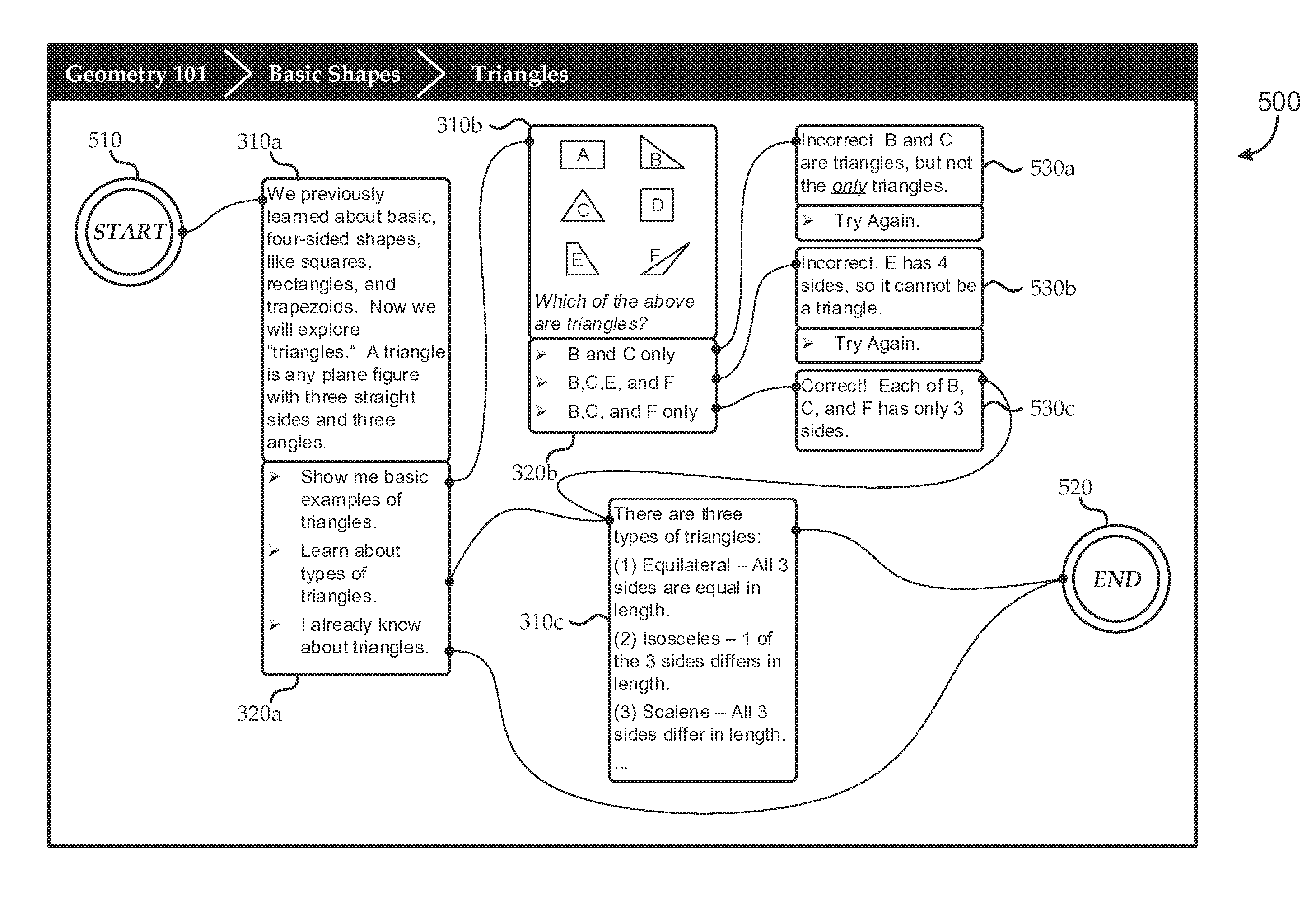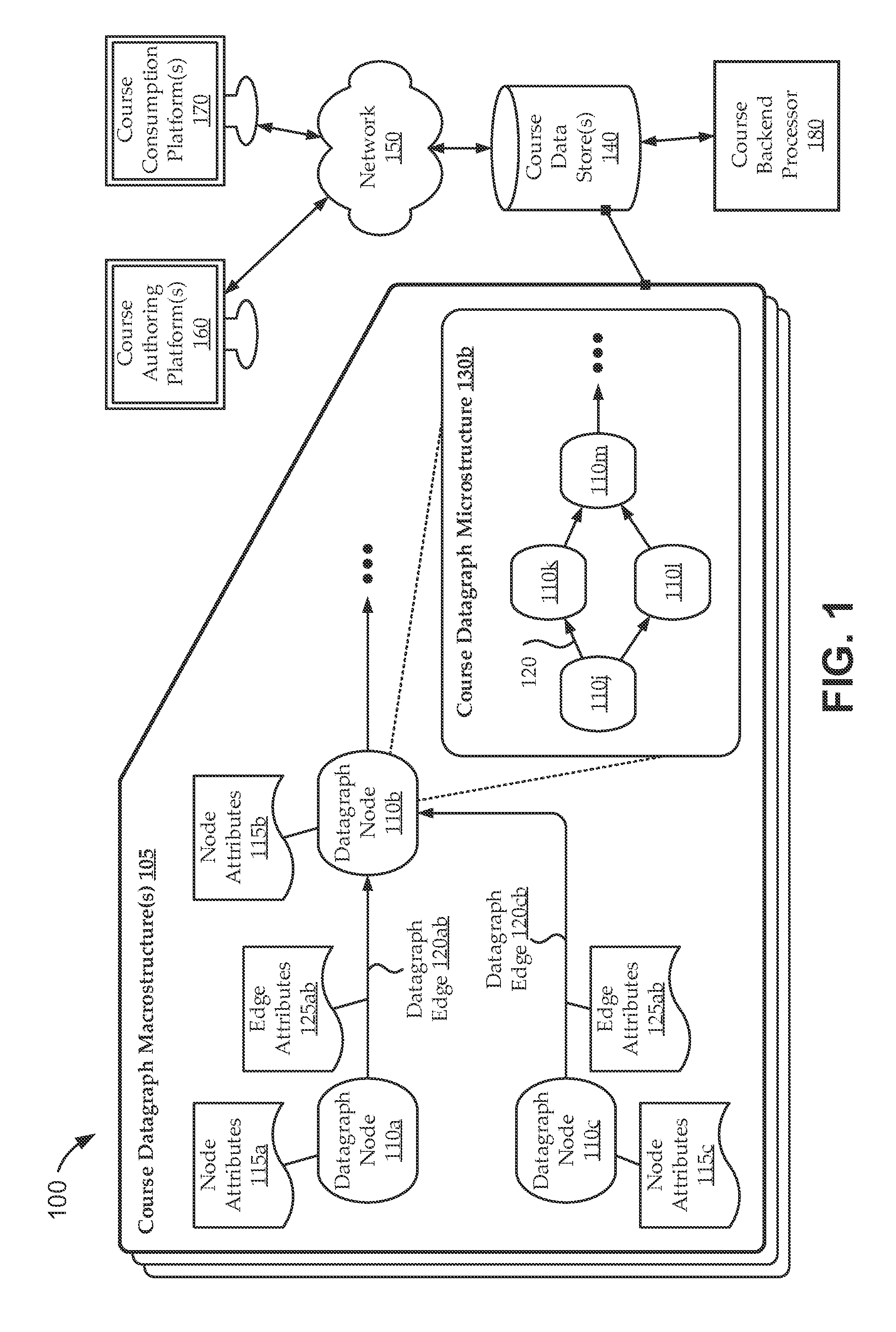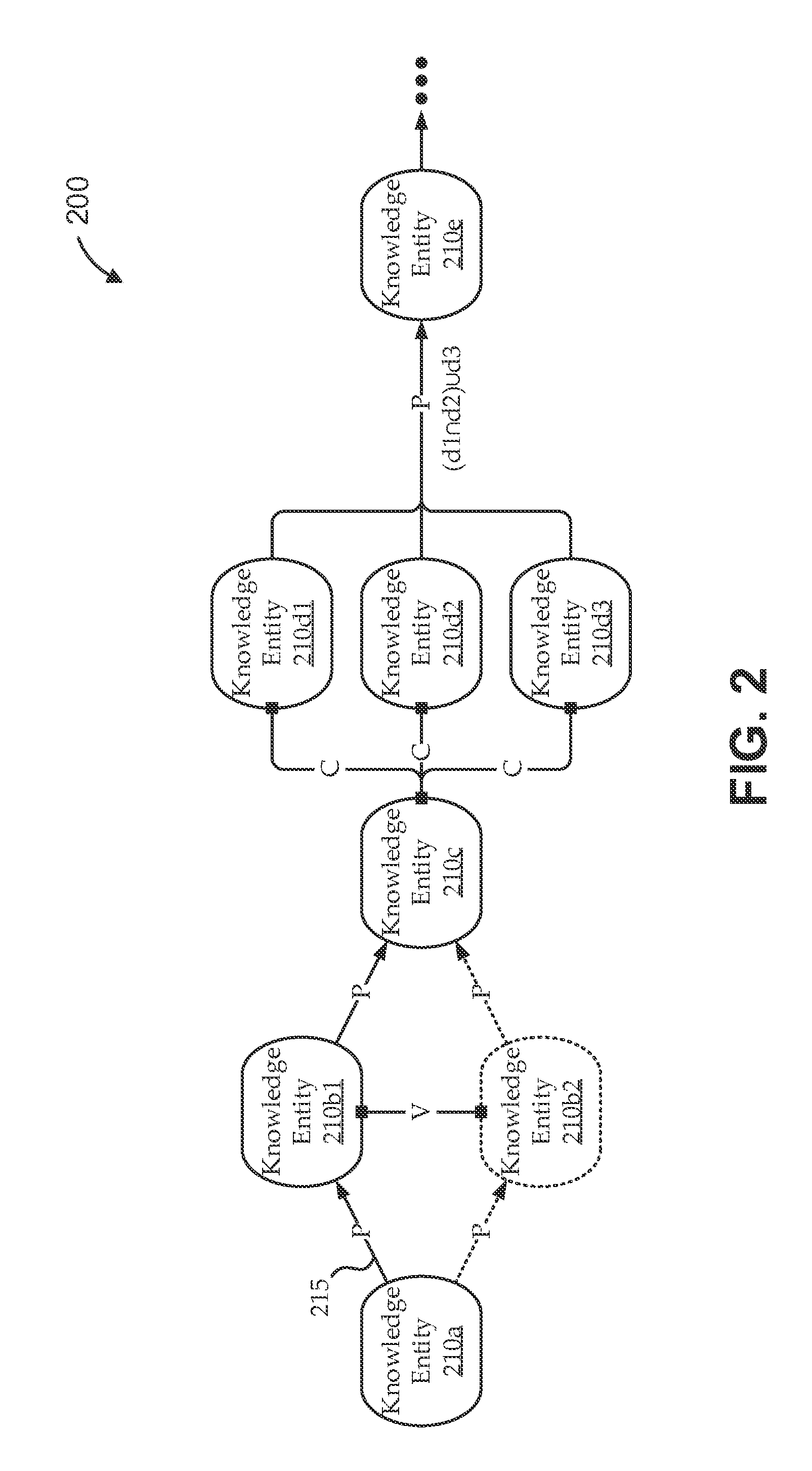Dynamic knowledge level adaptation of e-learing datagraph structures
- Summary
- Abstract
- Description
- Claims
- Application Information
AI Technical Summary
Benefits of technology
Problems solved by technology
Method used
Image
Examples
Embodiment Construction
[0021]In the following description, numerous specific details are set forth to provide a thorough understanding of the present invention. However, one having ordinary skill in the art should recognize that the invention may be practiced without these specific details. In some instances, circuits, structures, and techniques have not been shown in detail to avoid obscuring the present invention.
[0022]With the increasing ubiquity of computers and Internet access, many attempts have been made to create effective, on-line learning environments. For example, many traditional e-learning systems provide digital versions of traditional course materials, including digital versions of textbooks, some enhanced with videos, hyperlinks, integrated access to reference materials, on-line help, etc. Some traditional e-learning systems further provide self-practice and self-assessment capabilities, such as digital flashcards, timers, scored tests, and review questions. Some traditional e-learning sys...
PUM
 Login to View More
Login to View More Abstract
Description
Claims
Application Information
 Login to View More
Login to View More - R&D
- Intellectual Property
- Life Sciences
- Materials
- Tech Scout
- Unparalleled Data Quality
- Higher Quality Content
- 60% Fewer Hallucinations
Browse by: Latest US Patents, China's latest patents, Technical Efficacy Thesaurus, Application Domain, Technology Topic, Popular Technical Reports.
© 2025 PatSnap. All rights reserved.Legal|Privacy policy|Modern Slavery Act Transparency Statement|Sitemap|About US| Contact US: help@patsnap.com



